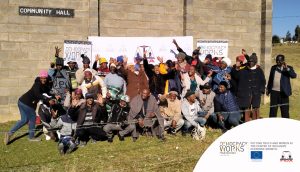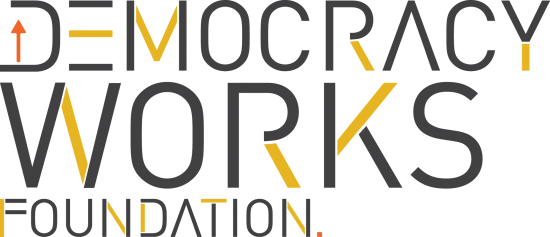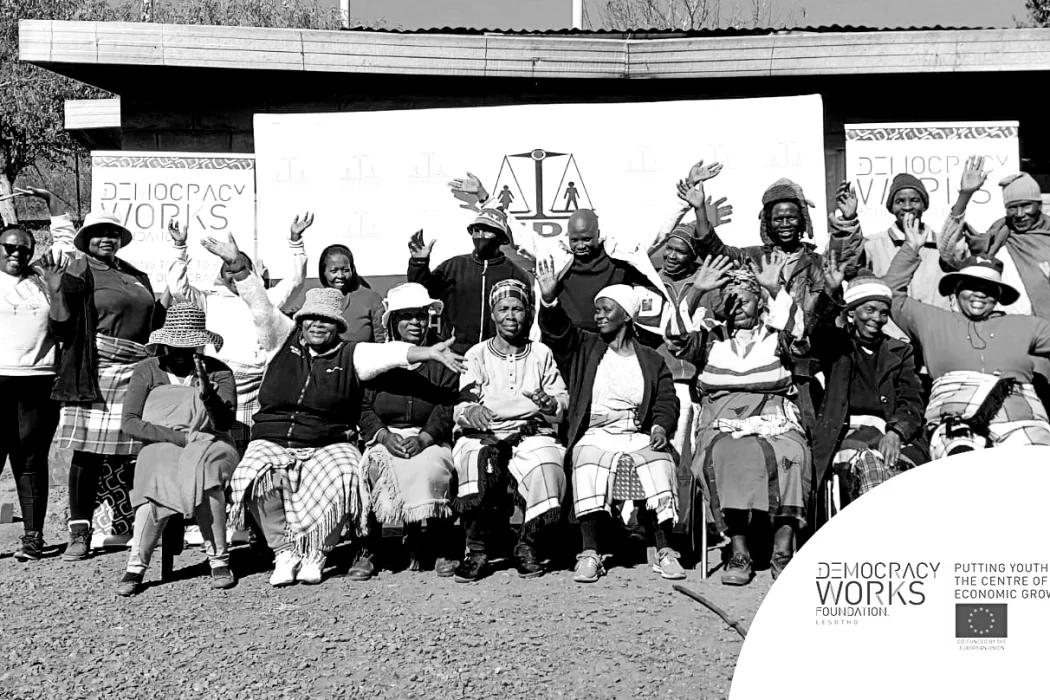Democracy Works Foundation (DWF), in partnership with the Federation of Women Lawyers (FIDA), is, implementing “Putting Youth and Women at the centre of Inclusive Economic Growth” #PYWEIG to be implemented in the Butha Buthe, Leribe and Maseru districts respectively.
The project is designed and benchmarked on the two priority areas mainly; ‘Supporting Civil Society Organisations in initiatives that promote youth participation and empowerment at district and national level’ ‘Strengthening Women CSOs capacities and engagements for participation in decision-making processes. The programme’s ultimate goal is to increase Youth and Women-led participation in Lesotho’s Small, Medium and Micro Enterprises (SMME) ecosystem.
It has been established that the SMMEs sector has massive potential to facilitate youth and women inclusion into Lesotho’s economy and as a significant driver of inclusive economic growth.
DWF and FIDA aim to develop the capacity of small and micro-enterprise support CSOs to participate meaningfully in government decision-making processes and fully integrate the inclusion of women and youth enterprises in their work programmes. The programme will also facilitate an enterprise support ecosystem that encourages and promotes the participation of women and youth through multi-sector cooperation through the enterprise support portal for district representatives (CSOs, BDS service providers). An online campaign will also be implemented at women and youth-led enterprises to raise awareness around the services provided by CSOs, government and other BDS service providers. However, increased capacity to participate in decision-making recognises only one dimension of vibrant democracies. To facilitate a political and economic ecosystem in which women and youth-led enterprises are represented in government decision-making requires a governance system that supports and encourages participation.

The objective of the inception meeting
DWF and FIDA agreed to discuss and unpack the project post-award period. The project staff met at the Kick for Life conferencing facility from the 19th to the 20th of July 2021, attended approximately by 10 participants from both organisations. The inception meeting was the first official activity that brought together the implementing partner to discuss the overall programme goal, the project’s objectives, and expected results, and draw linkages and logic of the intervention. The staff unpacked the project activities and logically linked how each connects to the other. DWF produced joint work plans after that, addressed institutional setup, M&E plan, tools, reporting and compliance issues, communication and visibility execution plan, strategies for project implementation, identified risks and assumptions, discussed a stakeholder engagement plan and agreed on beginning by implementing Participatory Action Research (PAR).
We also identified that our activities did not include preparatory activities such as baseline study, needs-capacity assessment, or stakeholder mapping exercise. We agreed that the preliminary activities would be merged with the PAR activity as the starting point.
Inception outcomes
- The institutional setup had to be two committees; the Project Staff and Steering Committee. The project staff committee was mandated to discuss on monthly basis issues about implementation, implementation progress and assessing risks and the context associated with the programme. At the same time, the Steering Committee composed of Senior Management would play the oversight role and hold the Project Staff accountable.
- The PAR approach was agreed upon to include the preparatory activities.
- The joint work plan was produced.
- The M&E tools, documents and system were agreed upon also.

Conclusion
The Project Team reconvened to thrash out the PAR design, which necessarily changes what has been committed in the logical framework. The concept note will be developed and shared with everyone for input and agreeable timelines for completing the exercise. All the participants were on the same page in understanding the implementation approach and the activities and how all the activities were linked to the PAR study.








